

Like many songbirds, the male and the female have different colored feathers. This is a trait called sexual dimorphism. Males have to be as bright as possible in order to impress a female during his mating flight sequence.
A male’s head and front are bright scarlet, while his back, wings, and tail are charcoal-gray. He has a black mask, beak, eye, and leg. Females have similar charcoal coloring on their wings, back, tails, and heads, but they have a white breast and light blush underparts.
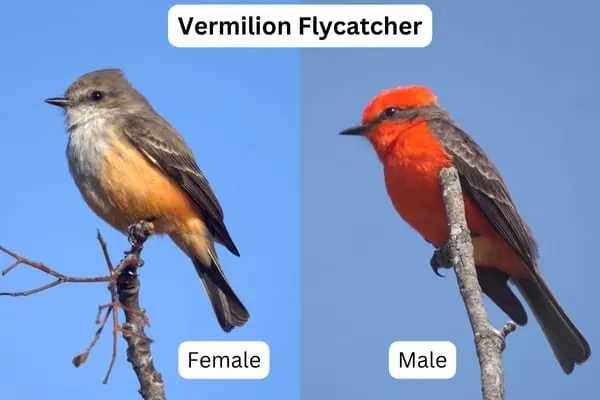
This ruby-colored gem stands out against the canyons and lowlands present in the Southwest, Mexico, and Central America. Some spend winters along the Gulf Coast. They adapt to a variety of environmental conditions including farmland, tropical lowlands, and deserts. The one uniting factor of their habitat choice is that they prefer open landscapes with occasional trees.
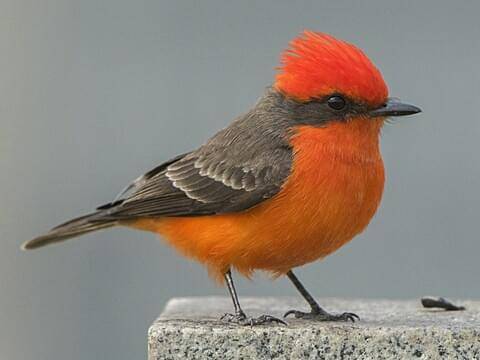
Vermilion flycatchers are voracious insect-eaters. Like small raptors, they perch on a fence post, tree branch, or brush pile, where they watch for insects to hunt.
They won’t visit bird feeders on the regular, but you can attract them to your yard by offering a water feature or native vegetation. If you have thriving flowers or other plants that attract insects, you may have more luck attracting these birds.
Natural historians who gave the Vermillion Flycatcher its scientific name () focused on the male’s bright red head coloring. The Latin name translates to “fire-headed ruby”. Their bright red head crest, when puffed up, really can resemble a flame in an otherwise green surrounding.
Their english name also describes their color. The word vermilion has historically been used to describe a certain pigment made from the red-orange mineral cinnabar. Today the word vermilion is often just associated with the color red.
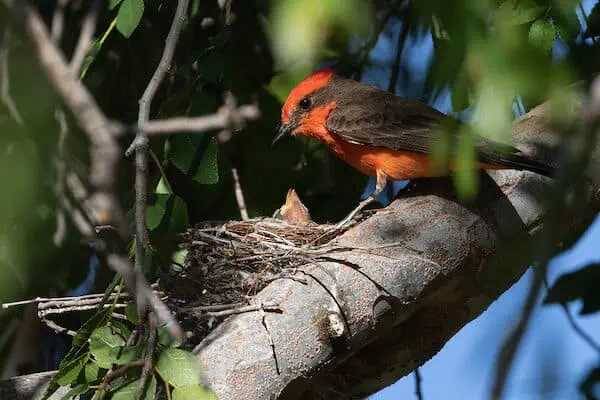
Both males and females contribute to nesting efforts. After the female picks which nest site she likes best, she gathers her nest material and builds a nest for their chicks. While she incubates the eggs, her mate brings her insects.
After the chicks hatch, both parents feed the nestlings.
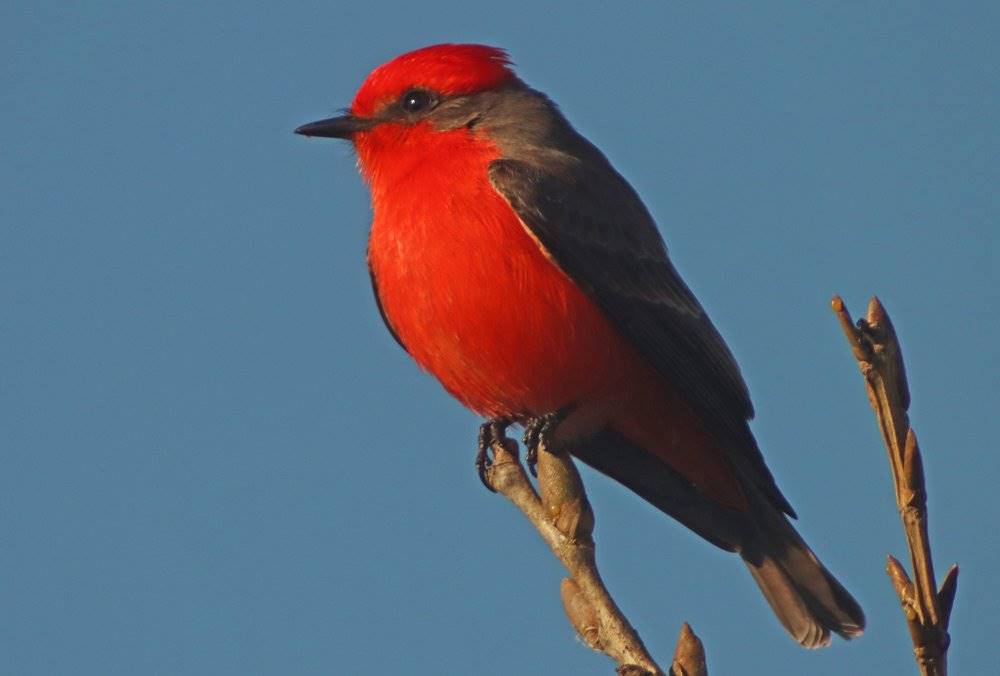
It’s easier to recognize a male Vermillion Flycatcher than it is to spot a female. Males stand out against the scrubby Southwestern landscape because of the bright red hue of their feathers. Their red when they defend their territory, and it often lays flat when they are relaxed or non-threatened.
While most Vermilion Flycatchers fly south into Mexico and Central America in the winter, a select population spends the winter along the Gulf Coast of the United States.
You’re most likely to see one bird at a time. They don’t form mated pairs until spring when they’re back in their warm-weather territory. Even so, occasionally flocks of males have been spotted hunting and roosting together in the winter.
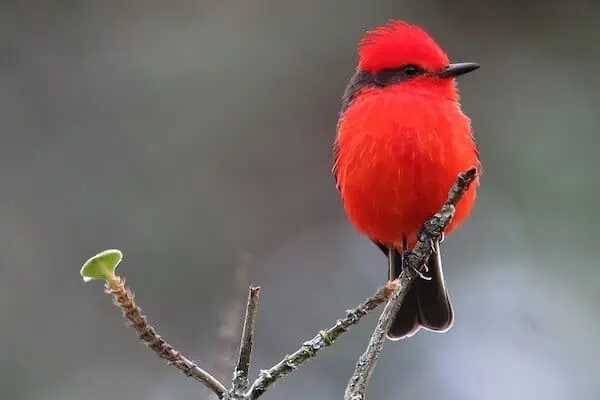
Males use their bright red feathers to catch the eyes of nearby females.
Their ritual to entice females can reach up to 100 feet in the air! During this mating dance, they tweet rapidly, flap their wings, and glide. Once they find a potential mate, he gives her a tour of the best nest sites in his territory.
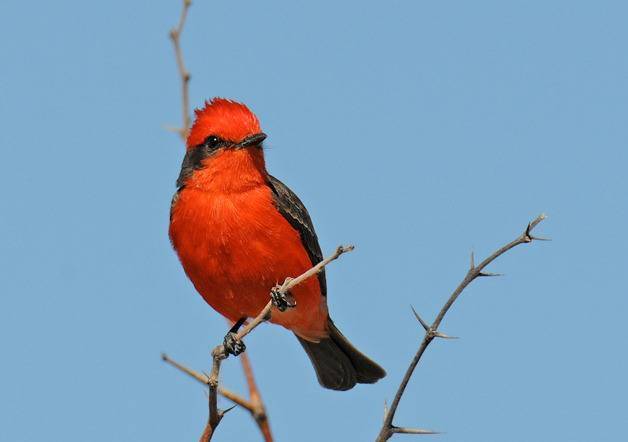
Most insects, especially the ones Vermilion Flycatchers love to eat, have thick exoskeletons made of a protein called chitin.
Chitin is hard to digest, so these birds save energy and time by coughing up bits of chitin from their meals. It’s similar to how an owl coughs up pellets with the bones of its prey – it just takes too much energy to digest.
After getting rid of extra chitin, they are now free to hunt again and find more nutritious sources of food.
Vermilion flycatchers don’t have powerful hooked beaks like raptors, so they can’t tear apart their prey into little pieces. They break their prey down into softer pieces by bludgeoning it against a rock, branch, or fencepost. This helps break down some chitin and pulverizes the insect so it’s easier to digest.
In the case of bees, it also helps remove or dislodge the stinger so it doesn’t hurt the bird after eating.
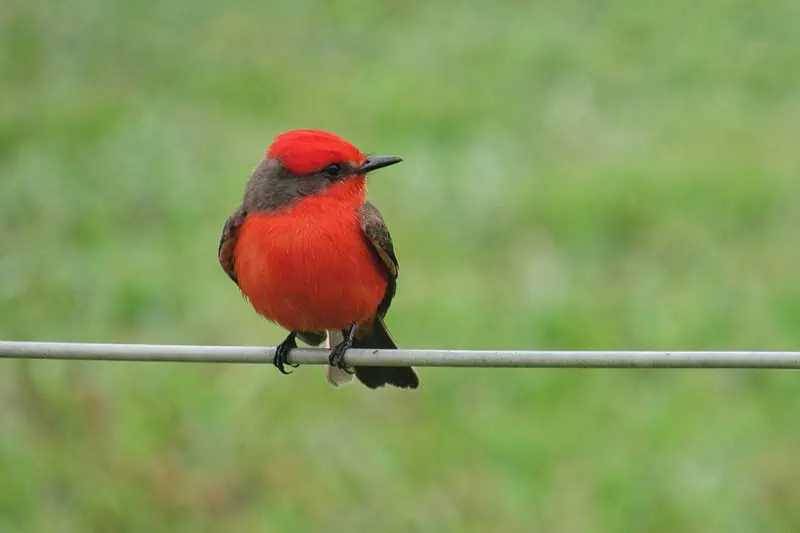
Vermilion Flycatchers thrive within the Southwest, Central America, and Mexico. Their food sources are abundant and they are not easily disturbed by changes in temperature or precipitation.
While human development might pose a risk to their populations sometime in the future, they are currently not under any environmental watches, and are not endangered.
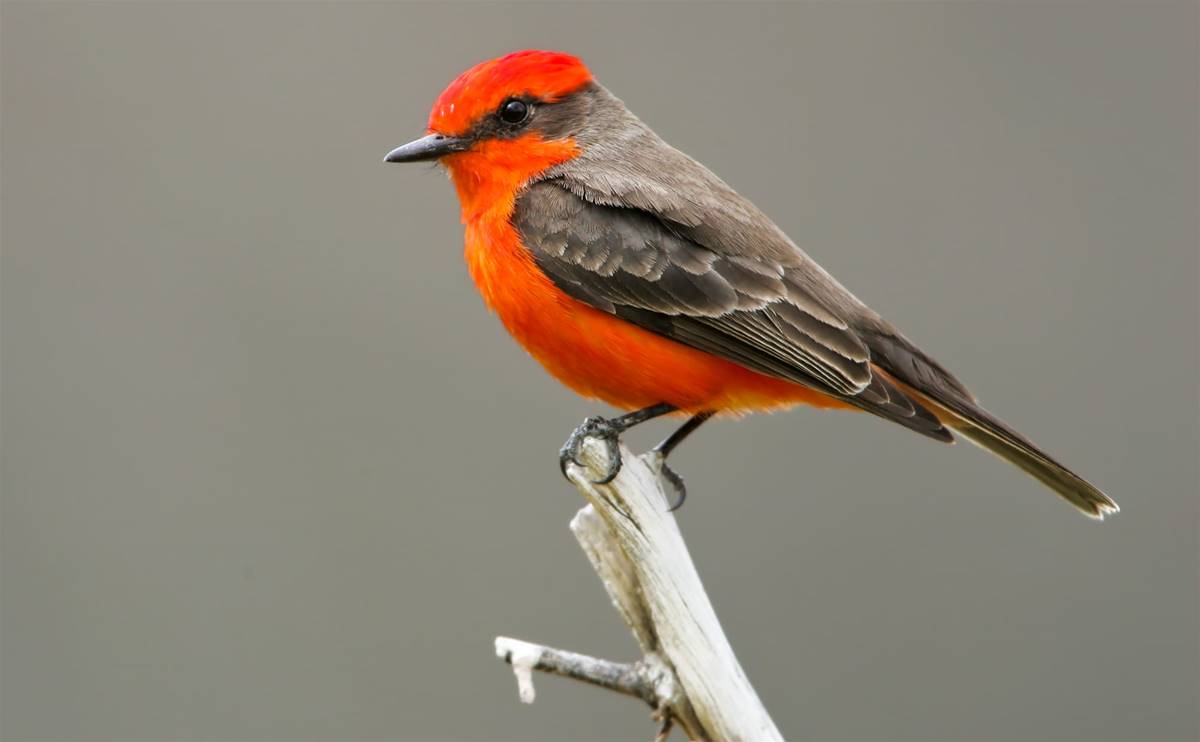
Songbirds are susceptible to predation from many different animals: snakes, raccoons, squirrels, and even other birds. Nesting season is one of the most vulnerable times in a bird’s life. The female keeps her chicks safe by hiding her nest, with the help of lichens.
The nest is usually a small cup made out of grasses, twigs, and soft down. She weaves it together with spiderwebs. Her finishing touch is bits and pieces of lichen, which interlock around the outside of the nest. They make the nest look like an extension of the tree.
Streams are great places to raise young because there are abundant insect populations near freshwater. The male doesn’t have far to fly to grab lunch and bring it back to his mate and the eggs she is incubating. When the chicks hatch and both parents hunt for food, they can make more trips because the nest is close by.
In dry landscapes, streams guarantee a regular supply of water. More plants grow around streams, increasing the number of hiding places for nests and new fledglings.
